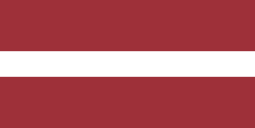Joniškis
| Joniškis | |||
|---|---|---|---|
| City | |||
|
| |||
| |||
 Joniškis Location of Joniškis | |||
| Coordinates: 56°14′0″N 23°36′0″E / 56.23333°N 23.60000°ECoordinates: 56°14′0″N 23°36′0″E / 56.23333°N 23.60000°E | |||
| Country |
| ||
| Ethnographic region | Aukštaitija | ||
| County | Šiauliai County | ||
| Municipality | Joniškis district municipality | ||
| Eldership | Joniškis eldership | ||
| Capital of |
Joniškis district municipality Joniškis eldership | ||
| First mentioned | 1526 | ||
| Granted city rights | 1616 | ||
| Government | |||
| • Mayor | Gediminas Čepulis | ||
| Population (2011) | |||
| • Total | 9,900 | ||
| Time zone | EET (UTC+2) | ||
| • Summer (DST) | EEST (UTC+3) | ||
| Website | http://www.joniskis.lt/ | ||
Joniškis (![]() pronunciation ) is a city in northern Lithuania with a population of about 11,150. It is located 40 kilometers north of Šiauliai and 14 kilometers south of the Lithuania–Latvia border. Joniškis is the municipal and administrative center of Joniškis district municipality.
pronunciation ) is a city in northern Lithuania with a population of about 11,150. It is located 40 kilometers north of Šiauliai and 14 kilometers south of the Lithuania–Latvia border. Joniškis is the municipal and administrative center of Joniškis district municipality.
With the Church of the Accession of the Holy Virgin Mary (founded in 1901) and a complex of two Jewish synagogues - Red (built in 1897) and White (built in 1823) at its centre, the town has the status of an urban architectural heritage site.
Joniškis has a Culture Centre, a local venue for music and theatre events.
A railway line connecting Riga and Šiauliai runs along the western boundary of the city. West of the railway, the city’s allotment gardens and the Lutheran and Victims of World War II cemeteries are located. Joniškis hosts the Jonas Avyžius Public Library of Joniškis District Municipality.
Name
Joniškis is the Lithuanian name of the city. Historical versions of the name in other languages include Polish: Janiszki, Russian: Янишки Yanishki, and Yiddish: יאנישאק Yanishok. In Latvian Joniškis, and earlier in Latvian Jānišķe. Also Jonischken in German.
History
Joniškis was established in the beginning of the 16th century. It was mentioned in written sources on 23 February 1536 when Bishops of Vilnius and Samogitia visited the area and found that people still practiced the old pagan faith. People were worshiping the God of Thunder (Perkūnas), fire, snakes and other pagan deities. The bishop of Vilnius, John of the Lithuanian Dukes baptized the locals and established the new parish on 23 February 1536. A wooden church was built and the town of Joniškis was built around it. Bishop of Vilnius named the town Joniškis after his own name Jonas. Joniškis was on the crossroad of important trade roads.[1]
In late 1941, 148 Jewish men were shot near Joniškis in the nearby forest. The remaining Jews (men, women and children) were murdered in the forest in September 1941. 493 people were murdered in total by an Einsatzgruppen of Joniškis policemen and Lituanian nationalists supervised by the Germans.[2]
Notable people
Sister cities
Joniškis is twinned with seven cities:[4]
 Alūksne, Latvia
Alūksne, Latvia Dobele, Latvia
Dobele, Latvia Võru, Estonia
Võru, Estonia Konin, Poland
Konin, Poland Kapyl, Belarus
Kapyl, Belarus Sulingen, Germany
Sulingen, Germany Vimmerby, Sweden
Vimmerby, Sweden
References
- ↑ Joniškis. Mūsų Lietuva, T. 3. Bostonas: Lietuvių enciklopedijos leidykla. 1966. p. 58.
- ↑ http://holocaustatlas.lt/EN/#a_atlas/search//page/1/item/93/
- ↑ Special to The New York Times (1973-11-27). "Laurence Harvey, Screen Actor, Is Dead at 45 - Attained Stardom With Role in 'Room at the Top' The Screen's Perfect Cad Enigmatic Flamboyance Was Also in 'Butterfield 8 and 'Manchurian Candidate' An Arrogant Manner - Article - NYTimes.com". Select.nytimes.com. Retrieved 2013-01-04.
- ↑ "International Relations". joniskis.lt. Retrieved 29 April 2014.
External links
- Official site
- The murder of the Jews of Joniškis during World War II, at Yad Vashem website.
| Wikimedia Commons has media related to Joniškis. |


